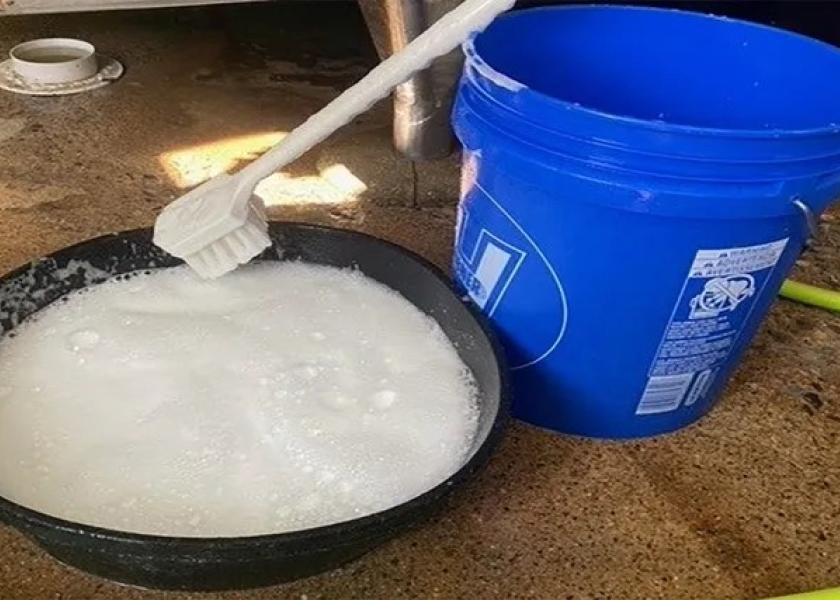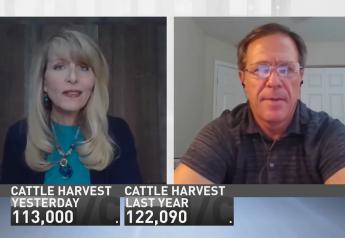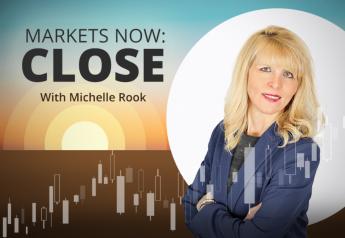Twelve Cases of HPAI in Dairy Cattle Confirmed in Five States

To date, 12 cases of highly pathogenic avian influenza (HPAI) have been confirmed in dairy cattle in five states.
The U.S. Department of Agriculture has made the confirmations in dairy herds in four states: Texas (7), Kansas (2), Michigan (1), and New Mexico (1).
In addition, the Idaho State Department of Agriculture announced March 28 that it had identified its first cases of HPAI in a Cassia County dairy cattle operation. The affected facility had recently imported cattle from another state and herd that had HPAI.
Fred Gingrich, DVM and executive director for the American Association of Bovine Practitioners (AABP), says the virus identified in affected dairy cows is the same virus that has affected the U.S. poultry industry since 2022.
“The assumption is the initial herds were affected by wild migratory birds,” Gingrich told Chip Flory, host of AgriTalk, on Tuesday.
Gingrich adds that government agencies, veterinarians and livestock industry groups have more questions than answers at this point about how HPAI is infecting herds, and they are not ruling out cow-to-cow transmission.
“Clinically, it looks like that's what is happening. Some of the newly infected herds outside of Texas had purchased animals from areas there that had affected herds. That indicates that we probably have some cow-to cow transmission,” Gingrich says. “What's not known is how does that transmission occur? Does it occur through oral secretions, through the manure, urine, or aerosolized in respiratory secretions like it is in birds? Or is there some mechanical transfer when cows are in the parlor together?”
Adopt Good Biosecurity Practices
The many unknowns at this point make the need for producers to adopt good biosecurity measures more important than ever. Gingrich says the AABP and the National Milk Producers Federation have teamed up to release a set of biosecurity guidelines for producer and veterinarian use. The guidelines and recommendations are available at bit.ly/3TGYMul.
The key points in the guidelines, Gingrich says, encourage dairy producers to minimize any opportunity for the transmission of HPAI by: minimizing livestock contact with wild, migratory birds, isolating new animals on the farm, limiting any visits to your farm to only essential workers and practicing good, general biosecurity measures.
“If you're moving either your own cattle home from a heifer grower, or you're purchasing animals, talk to your veterinarian about any potential screening that you might want to do for those cattle, which is just a good practice for any potential disease,” Gingrich advises. “Certainly, you just need to be careful about herd purchases when we have unknowns with an emerging viral event.”
Producers should use the same general precautions, Gingrich adds, for beef cattle and other livestock as well.
“Currently, there are no reports of HPAI in the U.S. beef herd, but certainly producers and veterinarians should be on alert to monitor and watch for any symptoms,” he says.
Five states, Delaware, Idaho, Nebraska, Tennessee and Utah, are taking additional precautions to increase their biosecurity measures. Dairy Herd Management's Taylor Leach reports the Nebraska Department of Agriculture (NDA) has issued a restriction on the importation of dairy cattle because of the recent HPAI outbreaks. Learn more here: New Regulation: Dairy Cattle Entry into Nebraska Now Requires Permit Amid HPAI Bird Flu Concerns
Silver Linings In The Clouds
When dairy cows are affected by HPAI, they tend to be only a small percentage of the total herd.
“It only affects about 10% of the cows in a herd, and it does not cause mortality, and we’re thankful for that,” Gingrich says.
Furthermore, any risk to the U.S. public from consuming dairy and meat is very low, because pasteurization destroys the virus.
Looking Ahead
Moving forward in the days and weeks ahead, Gingrich recommends that producers work closely with their herd veterinarians and sign up for HPAI alerts as they are released by the Centers for Disease Control, USDA and other federal and state agencies.
“I think the first thing is to be on the lookout for the disease symptoms in your herd; don't hide it. We all need to work together to continue the investigation. If you have a sudden drop in appetite and milk production in your herd, the first person you should call is your veterinarian and work through to get a diagnosis, whatever that might be," he says.
"Secondly, we want dairy farmers to know that the veterinary community cares about you. And we certainly understand that this is a scary time. So make sure that you're relying on your veterinarian and USDA and organizations like AABP for reliable information,” he adds.
Gingrich offers counsel for veterinarians as well. “Be aggressive with diagnostics, as the investigation is ongoing. Make sure that you are working with your diagnostic labs and state animal health officials to collect the appropriate diagnostics that we have posted on the AABP website. If you're an AABP member, we have a reporting portal where you can identify the herds with this syndrome.”
Learn more about this evolving issue in the following articles. You can also listen to the AgriTalk discussion between Dr. Gingrich and AgriTalk Host Chip Flory at the link below:
Rare Human Case of Bird Flu Confirmed. Officials Believe it Began on Texas Dairy







